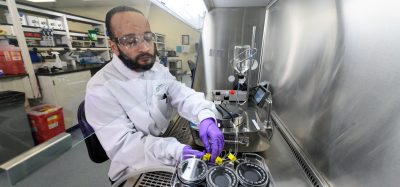Rapid microbiological methods and the regulatory environment
Posted: 23 January 2019 | Michael J. Miller | No comments yet
Rapid microbiological methods (RMM) continue to gain acceptance within our industry and a number of companies have already realised significant gains in detection sensitivity, automation, throughput, time-to-result and return on investment (ROI) when they have replaced their classical methods with these alternative technologies.


Multinational firms have also obtained regulatory approvals for the routine use of RMMs, when appropriate, from authorities such as the U.S. FDA, EMA and Japanese PMDA. When a company desires to implement a RMM, it is advisable that all stakeholders initially understand and then subsequently utilise the policies and submission tools offered by global regulators with respect to validation. For these reasons, it is worthwhile to review the expectations from the two largest authorities in this arena, the FDA and the EMA.
FDA was first out of the blocks
In 2004, the FDA’s Sterile Drug Products Produced by Aseptic Processing Guidance Document recommended the use of rapid genotypic methods for microbial identification, as these methods were shown to be more accurate and precise than biochemical and phenotypic techniques. Furthermore, the document states that other suitable microbiological tests (e.g., rapid methods) can be considered for environmental monitoring, in-process control testing and finished product release testing after it has been demonstrated that these new methods are equivalent or better than conventional methods. This guidance followed closely with another 2004 FDA initiative in which Process Analytical Technology (PAT) was introduced.
The PAT initiative described a regulatory framework that encouraged the voluntary development and implementation of innovative approaches in pharmaceutical development, manufacturing and quality assurance. PAT can be considered a system for designing, analysing and controlling manufacturing through timely measurements of critical quality and performance attributes of raw and in-process materials and processes with the goal of ensuring final product quality and improving manufacturing efficiencies. The initiative operates under the principle that quality cannot be tested into products; rather, it should be built-in or should be by design. At that time, many new technologies were available that provided information on physical, chemical and microbiological characteristics of materials that improved process understanding and measured, controlled and/or predicted product quality and performance. Companies that introduced PAT into their routine operations realised reduced production cycle times by using on-, in-, and/or at-line measurements and controls, eliminated rejects and re-processing, used real-time release strategies and saw an increase in automation. Rapid methods have played an important role in enhancing some of these manufacturing opportunities for those companies that have implemented real-time environmental monitoring and rapid in-process testing capabilities (e.g., the detection of bacterial or Mycoplasma contamination in mammalian cell cultures).
FDA’s expectations for validation
The appropriate pathway for rapid microbiology submissions to the FDA is best determined through direct dialogue with the Agency. For example, the PAT initiative recommends discussion with the FDA regarding all aspects of implementation for new process analytical methods, and this can apply to RMMs as well.
All of the currently available guidance on RMM validation can serve as a starting point for discussions with the FDA. These can include the recently revised PDA Technical Report No. 33 (2013), and the current versions of USP Chapter 1223 and Ph. Eur. Chapter 5.1.6. However, a firm may also develop their own validation strategy, as long as it is scientifically sound and defendable.
Each of the aforementioned guidance documents describes the basics for validation, including validation parameters and acceptance criteria that might be appropriate for each parameter. And while it is important that each validation parameter be addressed, the user may not need to perform all of the work themselves. For example, ruggedness and robustness may be better suited to be performed by the RMM supplier. However, the supplier can also provide additional validation test data, either by providing the data directly to the end user or by submitting the data to the FDA in the form of a Drug Master File (DMF). If a supplier’s DMF has been submitted, then the end-user would, in many cases, only have to provide test data that is not covered in the DMF, as well as product-specific data associated with the RMM being qualified.
There are a number of options for qualifying a RMM that will be used to support the manufacture of FDA-regulated drug product. If the RMM will be used with a new product, a firm may include the RMM in a new drug application (NDA) or an abbreviated new drug application (ANDA). If the RMM will be used with an existing product, and the RMM will replace a microbiology method that has been included in the product’s original regulatory submission, then it may be necessary to file a post-approval change or prior-approval supplement in the relevant Chemistry, Manufacturing and Controls (CMC) sections for that product. Once a RMM has been approved, either in an NDA, ANDA or a prior-approval supplement, subsequent product filings may include the RMM in an Annual Product Report. Another option is to file a Comparability Protocol to manage the validation of the proposed RMM.
A Comparability Protocol (CP) is a well-defined, detailed, written plan (and prior-approval supplement) for assessing the effect of specific CMC changes in the identity, strength, quality, purity, and potency of a specific drug product as these factors relate to the safety and effectiveness of the product. The CP describes the changes that are covered under the protocol and specifies the tests and studies that will be performed, including the analytical procedures that will be used, and acceptance criteria that will be achieved to demonstrate that specified CMC changes do not adversely affect the product. In terms of RMMs, the CP is a validation protocol to demonstrate that the RMM is suitable for its intended use. Furthermore, the CP can be particularly useful for changes of a repetitive nature, such as the use of a RMM for multiple products or processes.
Because the CP is reviewed by the FDA, deficiencies in the validation plan can be corrected prior to performing the studies, eliminating the need to repeat some or all of the testing. Once the CP is approved by the FDA, the experiments are carried out, and if they meet the acceptance criteria provided in the CP, the FDA is notified via a Special Report [as per 21 CFR 314.81(b)(3)(ii)], the latter which is submitted to the relevant application(s). The Special Report references the approved CP and includes a brief description of the RMM and its use, confirmation that the acceptance criteria have been met, and the date of implementation. The report can be as small as one page, because there is normally no need to communicate any of the testing data back to the FDA, unless the submission is associated with a biologics product, in which case the Agency may require the data to be submitted). Additionally, a reduced reporting category can be used to notify the FDA that the RMM is being implemented, such as a Changes Being Effected (CBE)-30 or CBE-0. For example, when using a CBE-0 notification process, a firm can immediately implement the RMM for routine use.
The same CP can be used (without going through another review and approval process) to subsequently validate the same RMM for additional products or samples, as long as the CP acceptance criteria are met. In this case, the same approved reduced reporting notification method can be used. It should also be noted that a number of companies have already used these same strategies for RMM approvals associated with drug product that is sold in the U.S.
For many RMMs, the FDA encourages changes to be managed under the PAT model. In this case, the PAT submission will be assigned to a PAT Review and Inspection Team (PATRIOT), consisting of CMC reviewers, compliance officers and investigators. The PAT application can include the use of a CP and pre- and/or post-approval inspections. Because the most appropriate regulatory strategy (PAT, CP, prior-approval supplement, etc.) will depend on the microbiology method change, the manner in which the method will be used, and the product(s) that will be affected, it is strongly recommended to discuss the proposed change with the FDA early in the implementation process. This is especially true for RMM changes that will impact in-process microbiology methods that are not included in an NDA or ANDA, as the implementation of the RMM may be better managed through a firm’s internal change control programme instead of going through a formal regulatory process. In-process tests that may fall under this category may include bioburden testing, purified water analyses, and environmental monitoring.
EMA follows suit with guidance on using RMMs for water testing
In 2005, a Question and Answer discussion on the regulatory consequences of implementing an alternative method for rapid control of microbiological quality of Water for Injection (WFI) and Purified water was developed by EMA’s Quality Working Party (QWP) in cooperation with the GMP/GDP Inspectors Working Group (GMDP IWG). The discussion was adopted by the Committee for Medicinal Products for Human Use (CHMP) and the Committee for Medicinal Products for Veterinary Use (CVMP) committees and published on the EMA Q&A website.
According to EU legislation, pharmaceutical manufacturers were required to use the European Pharmacopoeia (Ph. Eur.) standard for water in the manufacture of medicinal products. Following the discussions at QWP and the ad hoc GMP inspector’s group, it was suggested that the introduction of alternative methods might require specific review to ensure that the appropriate validation steps have been followed and that the water continues to meet the Ph. Eur. specifications. Since, in the case of water, the validation will not be product specific, it was suggested that a company could request the Supervisory Authority to carry out a specific site inspection. Additionally, the performance of such an inspection would be at the discretion of the Supervisory Authority and could involve a pharmaceutical assessor where necessary. Furthermore, because it was expected that the water would continue to meet Ph. Eur. specification, if tested, no change to dossier requirements (variations) would be involved, and therefore no regulatory impact on individual products would normally be anticipated. Of course, this would depend on the level of detail in the original dossiers concerned.
EMA’s answer to the comparability protocol
Historically, the EMA did not have a policy in place that allowed for the review and approval of a RMM validation plan prior to conducting the actual validation studies. Therefore, the evaluation of a proposed variation was performed as a whole, meaning that the planned studies, methods and acceptance criteria were simultaneously submitted with the testing results. If questions arose by any of the competent authorities, the submission may have been delayed due to additional testing requirements. However, in early-2011, the EMA introduced significant changes to the management of RMM reviews that made the validation and approval process much more predictable and in-line with processes that were in use by the FDA. The new process, which is very similar to the FDA’s comparability protocol, is called the Post Approval Change Management Protocol (PACMP).
In this two-step process, a change management testing protocol is first submitted as a Type II Variation. Commission Regulation (EC) No. 1234/2008 (‘the Variations Regulation’) and the ‘Commission guideline on the details of the various categories of variations’ (‘the Classification Guideline’) defines a Type II variation as a ‘major variation’, which may have a significant impact on the Quality, Safety or Efficacy of the medicinal product. The protocol should include the overall testing strategy, such as the planned studies, acceptance criteria and methods. Prior to submitting the PACMP, a firm may also discuss their testing strategies with the EMA under the Scientific Advice procedure. Once the protocol is approved, the submitting company will perform the testing as specified in the protocol.
The second step of the PACMP process involves submitting the resulting data (assuming they have met the protocol’s acceptance criteria) as either a Type IA or IB Variation. The decision as to whether the data is submitted as a Type IA versus a Type IB variation is determined at the time of protocol review and approval. Type IA variations are considered as minor variations that have only a minimal impact, or no impact at all, on the quality, safety or efficacy of the medicinal product, and do not require prior approval before implementation. If the data is submitted under a Type IA variation, the company can immediately implement the rapid method, similarly as what the FDA would consider under a CBE-0. The EMA also refers to this implementation strategy as the ‘Tell and Do’ procedure.
Type IB variations are also considered as minor variations, but is neither a Type IA variation nor a Type II major variation. In fact, when one or more of the conditions established in the Annex to the Classification Guideline for a minor variation of Type IA are not met, the concerned change may be submitted as a Type IB variation unless the change is specifically classified as a major variation of Type II. Specific supporting data for Type IB variations will depend on the specific nature of the change. Type IB variations must be notified to the National Competent Authority/EMA by the Marketing Authorisation Holder (MAH) before implementation, but do not require a formal approval. Furthermore, the MAH must wait a period of 30 days to ensure that the notification is deemed acceptable before implementing the change. The strategy is considered as a ‘Tell, Wait and Do’ procedure, and is similar to FDA’s CBE-30. The most apparent difference between the EMA’s PACMP and FDA’s Comparability Protocol is that the former will always require the submission of the test data. The introduction of the PACMP was a welcomed addition to the EMA’s other policy changes at that time, including revisions to type variations and the introduction of the Work Sharing Process or Common Assessment initiative.
Ph. Eur. Chapter 5.1.6, as well as PDA’s Technical Report No. 33, have been used successfully by firms validating RMMs for use with product that is sold in the EU. Additionally, regulators have stated that these guidance documents do not need to be followed exactly as long as any deviations from the guidelines are clearly stated and reasons provided (i.e., the validation plan must be scientifically sound and defendable). As such, firms are encouraged to have early discussions (i.e., regarding validation and implementation strategies) with the EMA, relevant competent authorities and/or the local inspectorate.
EMA and Scientific Advice
EMA’s Scientific Advice (SA) procedure is now available for all products regardless of the application procedure used. The SA procedure is used for scientific issues concerning quality, non-clinical and clinical aspects relating to the proposed future development of the medicinal product and focuses on general strategies. The SA procedure is also used during the early stages of product development but is not intended to offer a pre-review of data in support of a Marketing Authorisation application. Therefore, a firm may ask for advice on their RMM validation and implementation strategies. The SA procedure applies to the entire EU (with representation from all member states); however, individual national authorities may require additional discussions in addition to the advice received under this procedure. The SA is not legally binding and can be contradicted once the application is under official review; however, firms will receive an official document from the EMA SA working party. Finally, firms using this procedure may be invited to the EMA for a discussion meeting and there may be an opportunity to ask for further clarification following receipt of the SA letter.
Summary
Clearly, the regulators accept and encourage the use of rapid methods within our industry. New regulations and submission tools have been developed in the interest of streamlining the validation process, and firms have been successful in applying these guidelines when qualifying and implementing RMMs for routine use. Whether a firm plans on satisfying the expectations of the FDA, the EMA or any other regulatory agency, it is important to discuss the RMM validation and submission plans early in the design phase to ensure that all parties agree upon the best testing strategy. For an in-depth review of RMMs, validation strategies, available technologies and regulatory expectations, additional information may be obtained online at the author’s educational rapid methods website; http://rapidmicromethods.com.
About the author
Dr. Michael J. Miller is an internationally recognised microbiologist and subject matter expert in pharmaceutical microbiology and the design, validation and implementation of rapid microbiological methods. He is currently the President of Microbiology Consultants, LLC (http://microbiologyconsultants.com). For more than 25 years, he has held numerous R&D, manufacturing, quality, and consulting and business development leadership roles at Johnson & Johnson, Eli Lilly and Company, Bausch & Lomb, and Pharmaceutical Systems, Inc. In his current role, Michael consults with multinational companies in providing technical, quality and regulatory solutions in support of RMMs, sterile and non-sterile pharmaceutical manufacturing, contamination control, isolator technology, validation and microbiological PAT. He also provides comprehensive training for his clients in the areas of rapid method validation and implementation. Michael has authored more than 100 technical publications and presentations in the areas of rapid microbiological methods, PAT, ophthalmics, disinfection and sterilisation, is the editor of PDA’s Encyclopedia of Rapid Microbiological Methods, and is the owner of http://rapidmicromethods.com – a website dedicated to the advancement of rapid methods. He currently serves on the Editorial Board for European Pharmaceutical Review, chaired the 2013 revision of the PDA Technical Report #33: Evaluation, Validation and Implementation of New Microbiological Testing Methods, and routinely provides RMM training programmes for the industry and professional organisations worldwide. Michael holds a Ph.D. in Microbiology and Biochemistry from Georgia State University (GSU), a B.A. in Anthropology and Sociology from Hobart College, and is currently an adjunct professor at GSU.
Issue
Related topics
Microbiology, Rapid Microbiological Methods (RMMs), Regulation & Legislation








